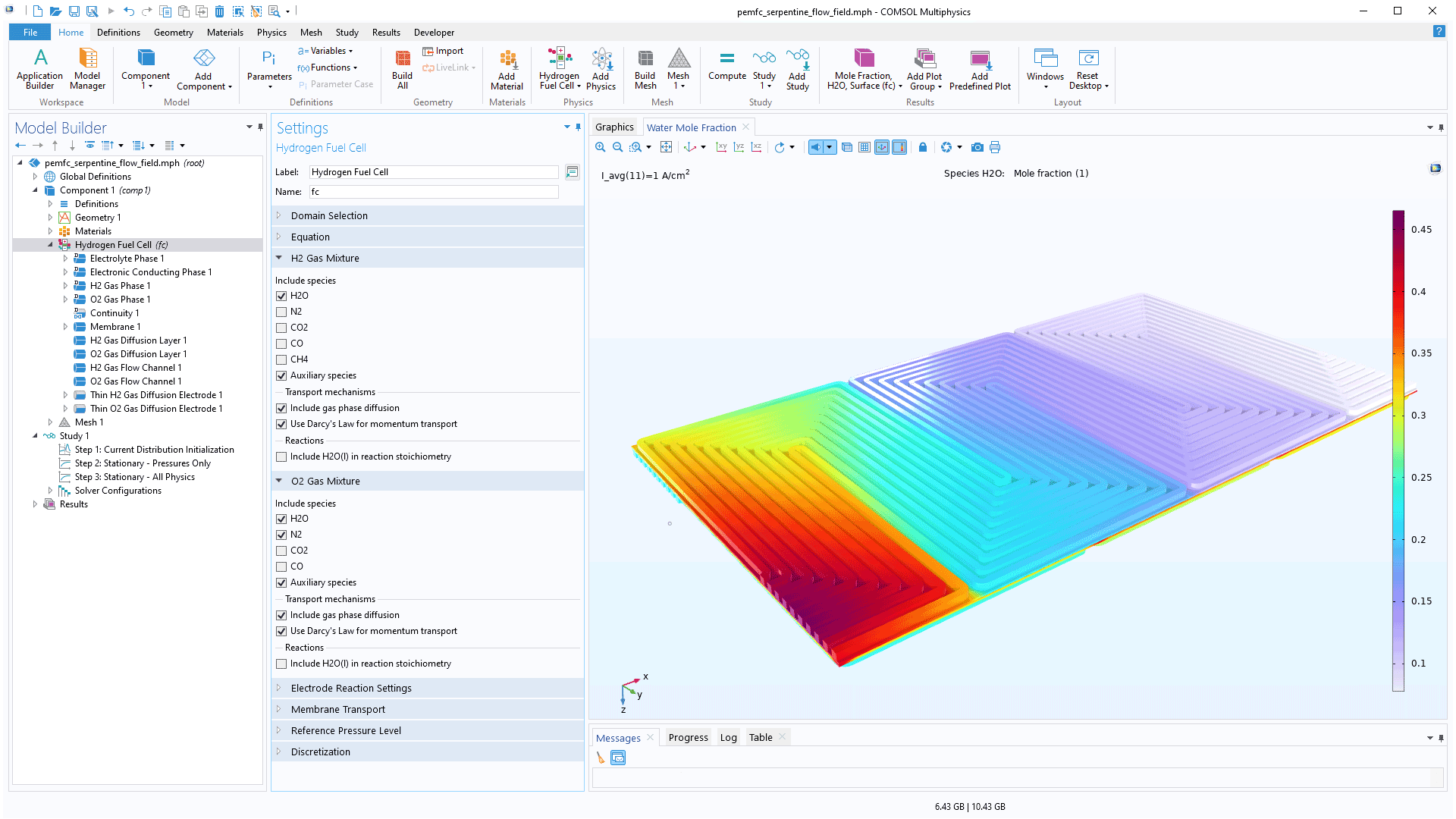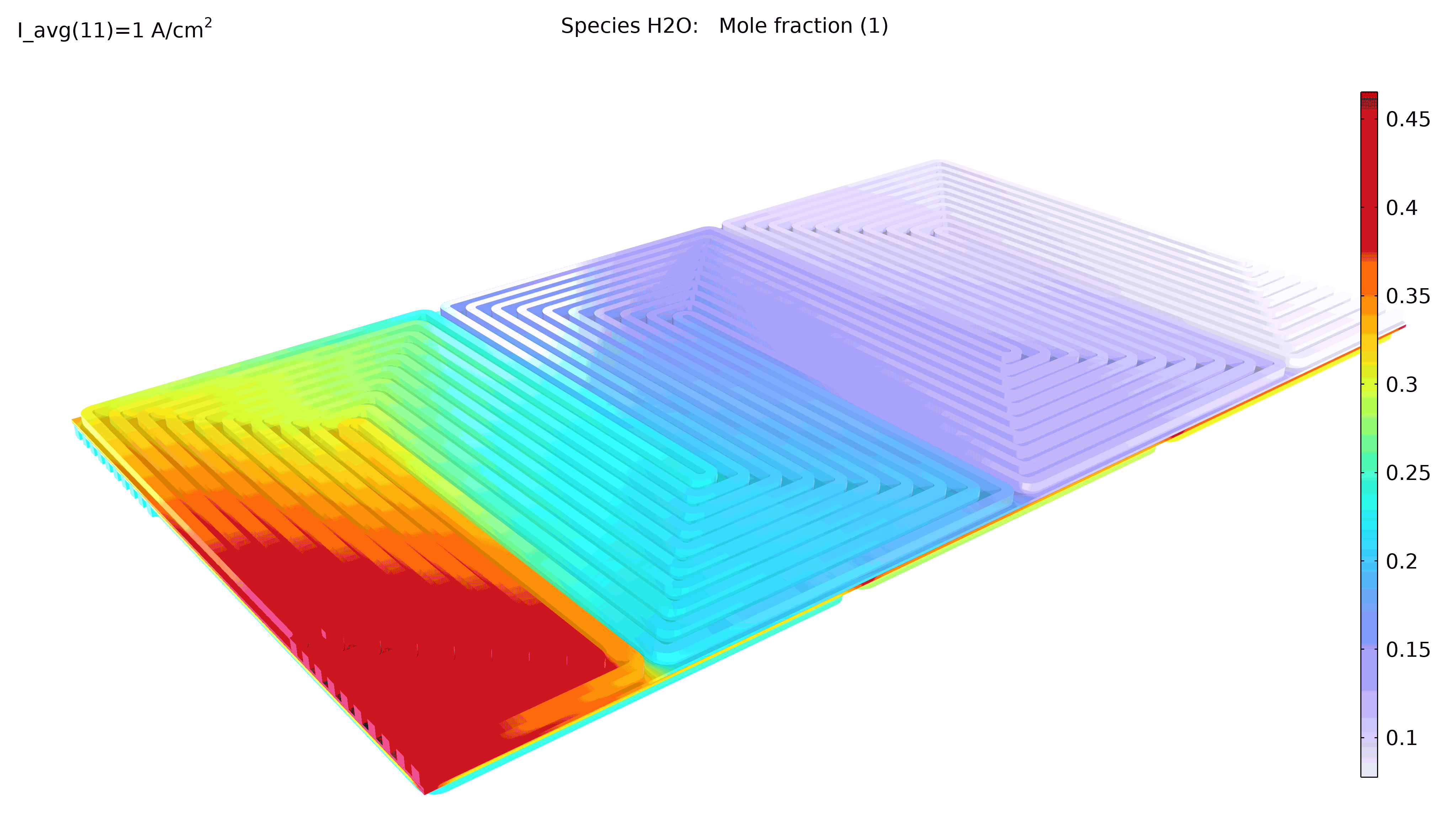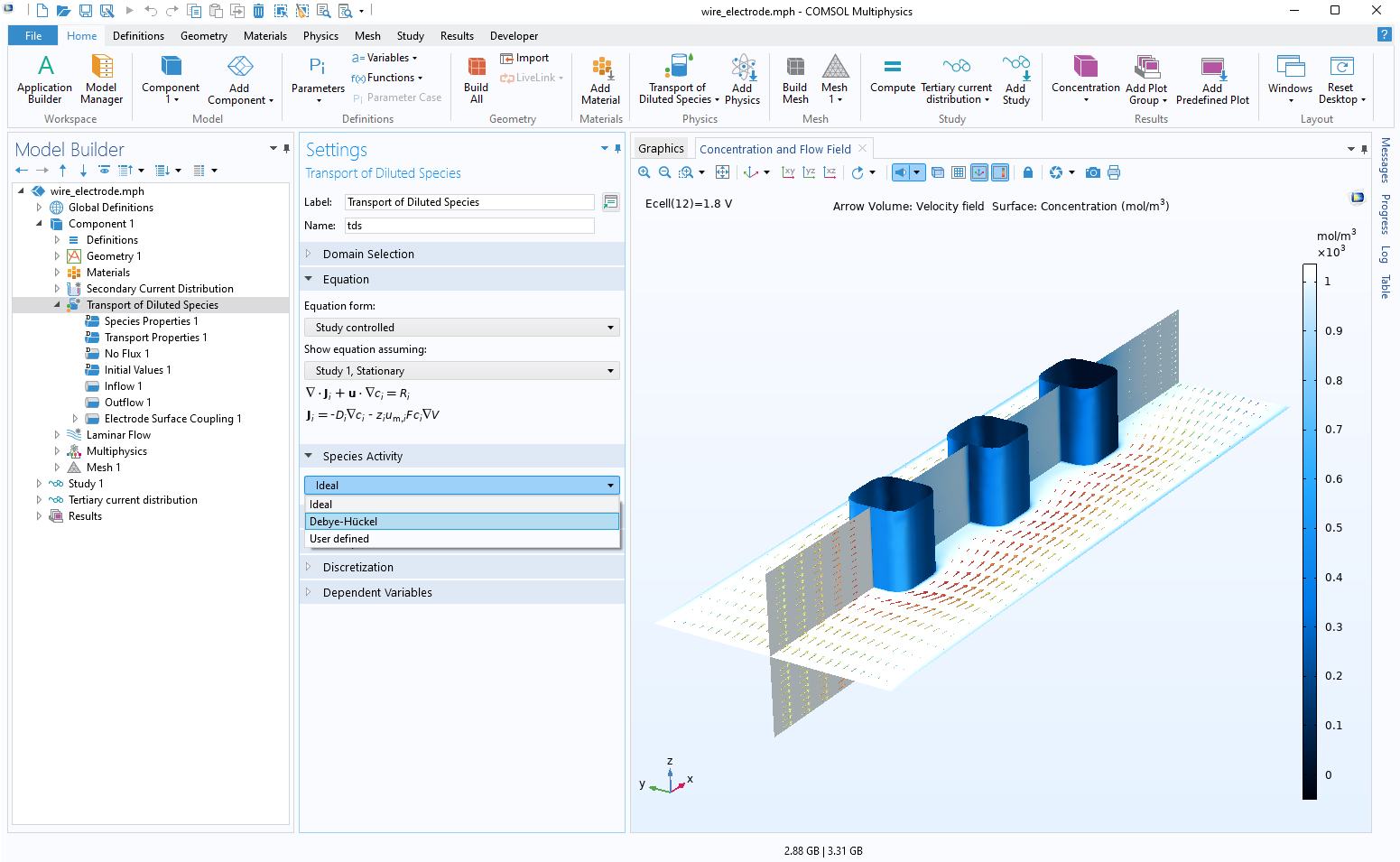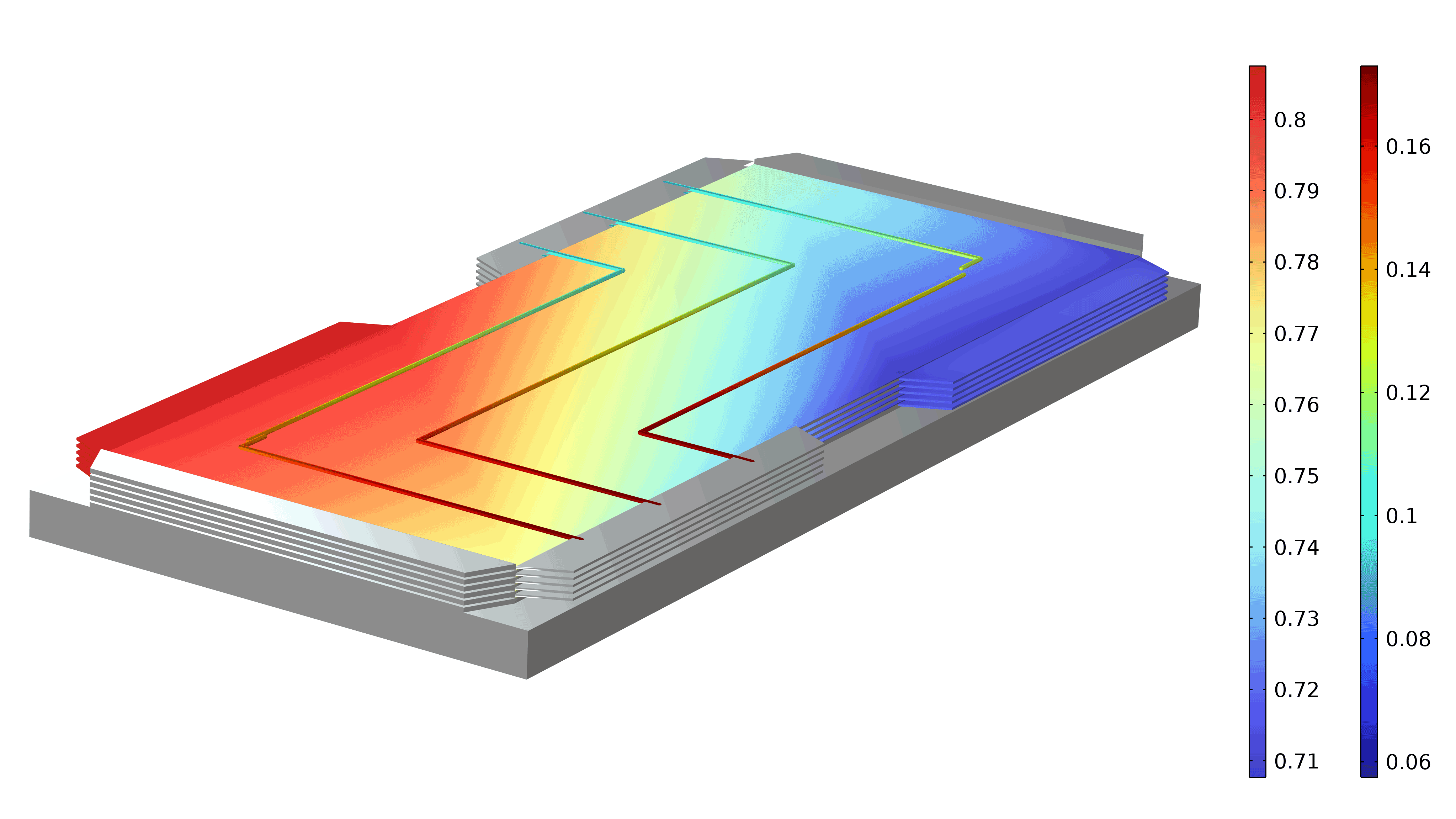support@comsol.com
Fuel Cell & Electrolyzer Module Updates
For users of the Fuel Cell & Electrolyzer Module, COMSOL Multiphysics® version 6.1 provides the ability to add auxiliary species, improved default solvers and stabilization for 3D models, and improvements to the Continuity condition for assembly geometries with identity pairs.
Auxiliary Species in the Hydrogen Fuel Cell and Water Electrolyzer Interfaces
It is now possible to add and arbitrarily define one additional auxiliary species in hydrogen and oxygen gas mixtures in the Hydrogen Fuel Cell and Water Electrolyzer interfaces. This allows for more flexible modeling of systems containing, for example, trace impurities, sulfuric compounds, heavy hydrocarbons, and ammonia.

Improved Default Solvers and Stabilization in the Hydrogen Fuel Cell and Water Electrolyzer Interfaces
The default solver generation for 3D models using the Hydrogen Fuel Cell and Water Electrolyzer interfaces has been significantly improved, with the generated default solver depending on the physics settings and the number of degrees of freedom. For large problems, algebraic multigrid iterative solvers are now generated by default, which reduces memory usage and computational time considerably. In addition, stabilization of the convective terms in the gas phase transport equations has been added to the Hydrogen Fuel Cell and Water Electrolyzer interfaces. The added stabilization makes it possible to solve fuel cell and electrolyzer models with coarser meshes, which is typically needed when working with larger geometries.

Improved Continuity Condition on Assembly Pair Boundaries
Assembly pairs are typically used when nonmatching mesh elements are used on each side of a boundary. The need for using assembly pairs may arise when using, for instance, swept meshes in complex 3D geometries. In version 6.1, the Continuity boundary condition for potential dependent variables (for both the electrode and electrolyte phases) of assembly pair boundaries has been significantly improved in terms of accuracy and numerical stability in the Current Distribution interfaces.
Nonideal Species Activity Coefficients
Version 6.1 introduces functionality for modeling nonideal electrolytes using Debye–Hückel theory. In such electrolytes, even a small variation in concentration — in the millimolar range — may cause measurable changes in quantities such as pH and electrode equilibrium potential. The ability to account for nonideal effects in modeling and simulation is therefore an important addition to the electrochemistry interfaces. In this version, it is now possible to include these effects in the Tertiary Current Distribution, Nernst-Planck and Transport of Diluted Species interfaces. The activity coefficients may be defined using either the Debye-Hückel species activity or user-defined expressions.

Advanced Chemical Formulas
It is now possible to use more advanced formulas for chemical species and chemical reactions. The enclosing marks (),[], and {} can be used to indicate structural units in the molecular formula in a coordination complex, for example. To improve readability, simplified names can be used in the reaction formula to indicate an entire species or a part of the molecular structure. When reaction balancing is performed, the complete composition and charge is considered.
Improved Performance of Property Evaluations
The enhanced performance of property evaluations is noticeable in all property computations, such as density and viscosity, as well as for thermodynamic properties like heat capacity and vapor pressure. Models where a significant part of the solution time is spent performing property evaluations can now be solved in as much as 30% less time.
Improved Functionality for Adding Species to a System
The functionality to search for species in the database and add them to a model has been extended and improved. The species filtered from a search can now be added one at a time using the Enter key. In addition, it is no longer necessary to reset the filter result when a species has been added.
New Tutorial Model
COMSOL Multiphysics® version 6.1 brings one new tutorial model to the Fuel Cell & Electrolyzer Module.

